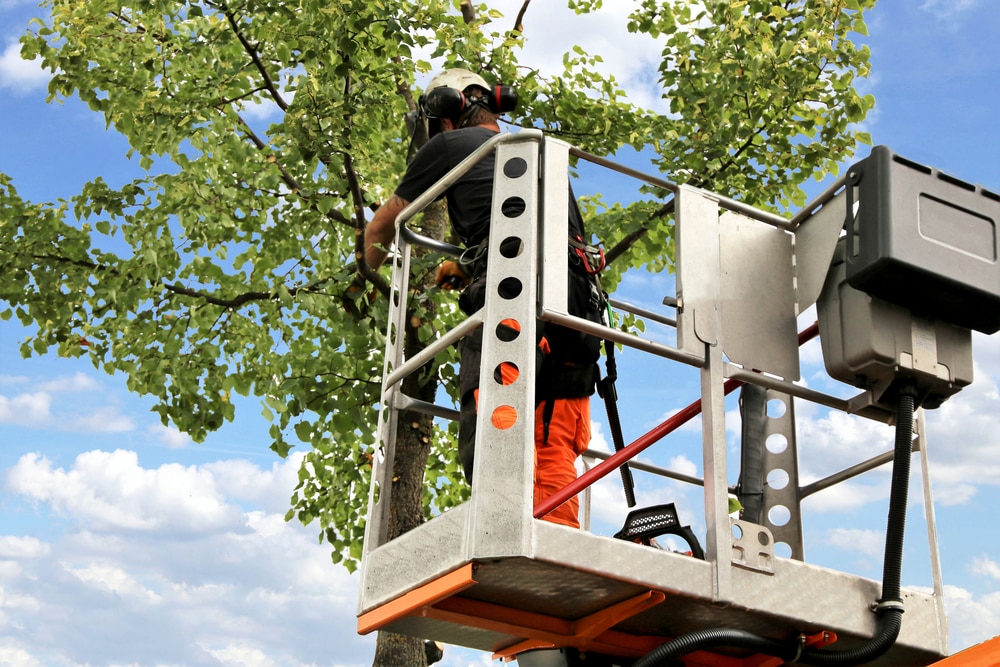The health of trees is something most of us have probably never given much thought to, but if you have any trees on your property, it’s essential that you’re aware of diseases that can render them unattractive but also contagious to other trees. This post will provide an overview of common tree diseases in New South Wales.

Phytopthora cinnamomi is a soil-borne fungus that affects the roots of plants, causing them to become water-stressed and die. The infected plants appear wilted, stunted or yellowed. Phytopthora cinnamomi can survive on dead plant material in the soil for up to two years, so it’s important to remove all plant debris immediately after pruning or storm damage.
It’s best to avoid planting susceptible species like silver wattle around areas where you’ve had an outbreak of Phytopthora cinnamomi as well as any garden beds built on top of sandy soils that have been recently cleared with machinery; this will help prevent future outbreaks from being introduced into your garden.
Armillaria root rot is a serious disease that can cause significant damage to trees and other plants. The fungi that cause Armillaria root rot are spread through the soil by wind and rain, as well as through infected plant material. There are many different species of trees affected by this fungus, including eucalypts, oaks and chestnuts. Some native species such as flooded gum (Eucalyptus grandis), Sydney blue gum (Eucalyptus saligna) and box ironbark (Eucalyptus sideroxylon) are more susceptible than others due to their shallow root systems.
Verticillium wilt (Verticillium albo-atrum) is a common tree disease that can kill plants and trees in New South Wales. It occurs when the fungus enters the plant through its roots and then spreads throughout the entire tree. The disease attacks plants by clogging up their vascular system, causing them to die from lack of water and nutrients. Symptoms of verticillium wilt include wilting leaves during hot weather conditions; yellowing leaves; dead branches; cankers or cracks on bark or trunks of affected trees; and swollen roots on infected plants (especially near the soil surface).
The fungus Ganoderma applanatum is a common cause of butt rot in eucalypts and may be seen at any stage of the growth cycle. The disease is usually associated with decay in the lower trunk, but can also affect branches or roots. If left untreated, trees suffering from Ganoderma butt rot will die as a result of cambial death (the death of cambium).
Chalara australis (ramorum dieback), also known as ash dieback, is a fungal disease affecting ash trees. It was first detected in Europe in 1992 and has since spread to other areas of the world. This is a serious threat to ash trees in New South Wales, where it causes leaf loss and necrosis of the woody tissue of the trunk and branches.
It grows on bark wounds or other damaged parts of an infected tree, forming galls that may be black or white depending on temperature and humidity conditions. Infected trees will produce fewer leaves than healthy trees and have smaller leaves with an abnormal appearance, such as twisted margins or curling leaflets. The fungus can also cause premature leaf drop, which results in dead patches on the foliage if left untreated for long periods of time.
Dieback is a common problem in eucalypts and can be caused by a number of different fungi. This disease can cause the death of the tree if left untreated. Seiridium spp. is most common in eucalypts but has also been observed on a wide range of other native trees, including ironbarks, boxwoods and tea trees (Melaleuca).
Phytophthora lateralis is a root and crown rot of eucalypts. The fungus Phytophthora lateralis causes this disease, most prevalent in wetter areas of NSW. Symptoms include dieback, cankers, branch dieback and crown dieback.
Phytophthora root rot is particularly damaging to young trees or recently planted trees as it can kill them before they reach maturity. To prevent this disease from spreading on your property, you should:
Leaf spot, caused by several different fungi, is identifiable by the appearance of circular or irregularly shaped spots on leaves. Leaf spot can be treated by pruning out infected leaves as soon as you see them. This will help reduce the spread of fungus and make it less likely for your tree to become infected in future seasons. The best way to prevent leaf spot is to prune out infected leaves in the autumn when there are fewer spores present in the air (approximately six weeks after flowering).
As a tree arborist, it’s important to be able to spot the signs of Botryosphaeria dothidea/Botryosphaeria stevensii and Diplodia pinea (dieback, canker and branch dieback). These two diseases often occur together.
The most obvious indicator that your tree has been infected by this fungal infection is browning leaves on the topmost branches. This type of leaf spotting is not a good sign for your tree as it usually indicates that there are other problems going on inside the trunk and roots too.
Phytophthora nicotianae var. parasitica (black wet rot) is a soil-borne plant pathogen that causes root rot, stem cankers and branch dieback of Eucalyptus species, particularly blue gum and other broadleaved trees. This disease has also been found on Pinus elliottii (slash pine), however, it does not seem to cause any significant damage or mortality.
Some tree diseases are better identified by arborists.
Tree diseases are often difficult to identify, which is why it’s essential to seek the help of tree removal and tree pruning specialists like All Tree Solutions.